What is happening in Downey, California? First, it was the original Taco Bell, and now its Norm’s restaurant that is under threat of demolition, though the latter is being considered for historical protection by the Cultural Heritage Commission. Both buildings have hashtags dedicated to saving them, #SaveTacoBell and #SaveNorms, respectively, because they are icons of Southern California’s suburban fast-food legacy, as well as the history of pop architecture. The Taco Bell is more of a Mission-style taco stand, but Norm’s — along with the oldest McDonald’s and Bob’s Big Boy Broiler — are landmarks of what is known today as Googie Architecture.

Norm’s Restaurant. Image via Wikimedia Commons
Googie (pronounced GOO-jee) is a style of architecture that was very popular in America in the 1950’s and 1960’s, and is a mixture of Modernism, American car culture (which thrived in Southern California), and Space-Age retro-futurism. The Jetsons were a Googie family. The architectural style is said to have started in Southern California in the late 1940s with a series of three designs for Coffee Dan’s by non other than John Lautner, the architect Best known for the Chemosphere house in Los Angeles.
Douglas Haskell named the style in 1949, after he stumble across the Lautner-designed Googie’s coffee shop on Sunset Boulevard and Crescent Heights in Los Angeles. Googie developed in parallel to other design fields, as well as Post-war pop culture, especially the newly ubiquitous TV. At the time, architects considered it crass for this reason, but now we can see that it is a snapshot of some of the most exciting times to be an American.
Some of the key features of Googie, found in such diverse typologies as bowling alleys, churches, professional centers, coffee shops, motels, and car washes, were:

Orbit gas station in Sacramento, CA. Image via www.waymarking.com.
Upswept Roofs: These upturned roofs made the building look like it was about to fly away, especially when it had a curved roofline. They also allowed for more glass surface on the form of the building.
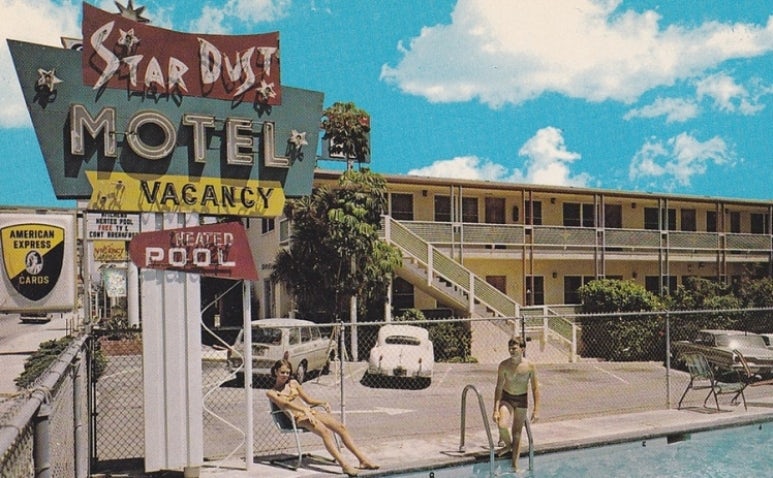
Stardust Motel. Image via www.origindesignstudio.co.uk.
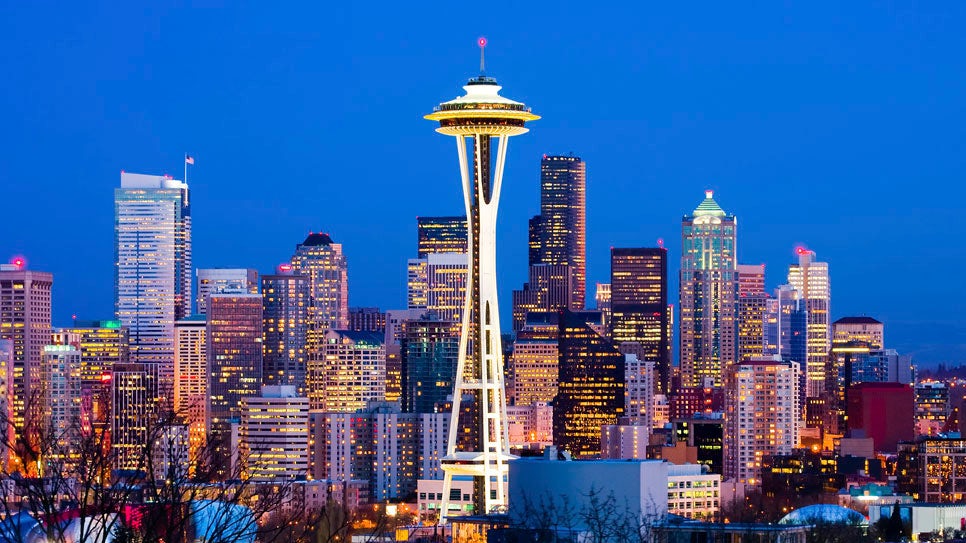
Googie skyscraper: The Space Needle in Seattle, Wash. © 123RF Stock Photo
Atomic Models, Starbursts and Flying Saucer Shapes: These shapes allude to the hopeful symbols of a bright future. Inspired by science and the Space Race, atomic models pointed toward a future utopia, while flying saucers and starbursts were a playful reference to outer space and the popular appeal of lunar exploration.
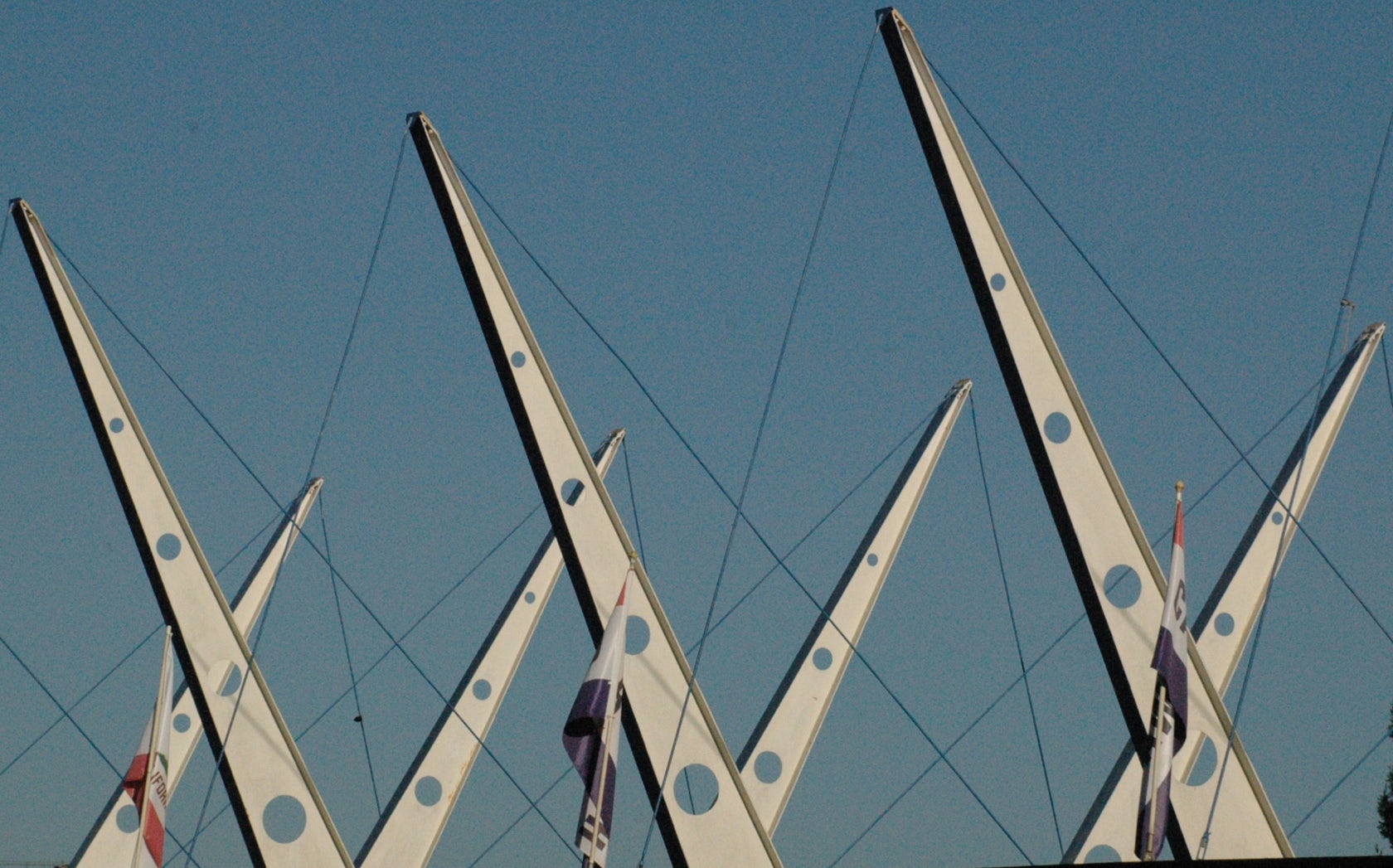
Image via pinterest.com
Large Sheet-Glass Windows and Exposed Steel Beams: The Modernist elements of Googie were slightly altered as they absorbed into their context. Glass opened up interiors to the sunny California landscape, while the tall, shiny façade was designed to attract drivers as they passed by. Smaller steel supports made the roofs appear to float, and larger steel beams often had geometric holes cut in them to resemble rockets.
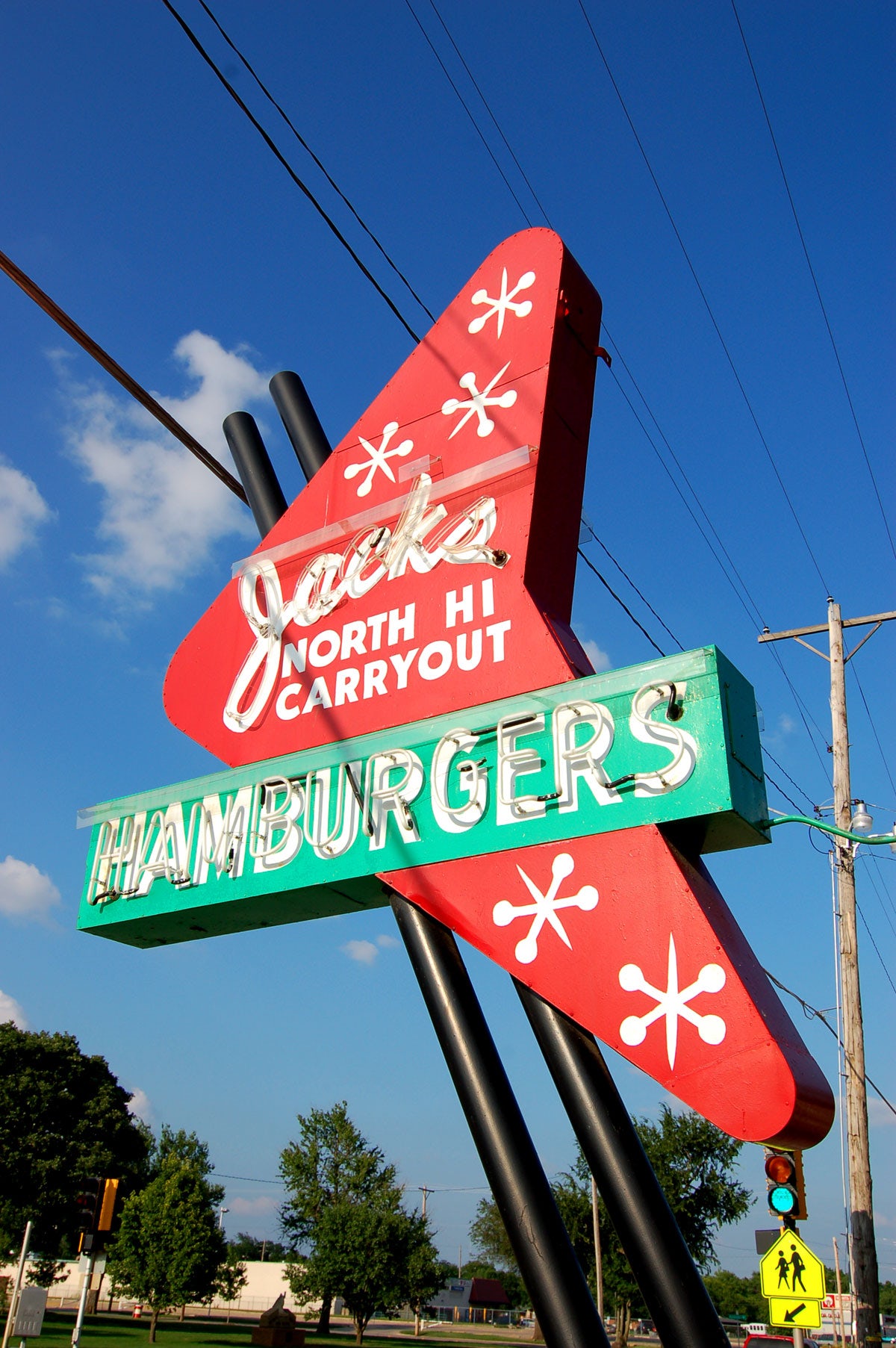
Image via www.flickr.com
Amoebae and Boomerang Shapes: These were graphically linked to every aspect of mid-century design, including chairs, Formica, graphic logos, pools, roadside signs, and other pop culture ephemera. The amoeba might have been derived from WWII camo patterns, while the boomerang was likely an abstraction of airplanes and flight.
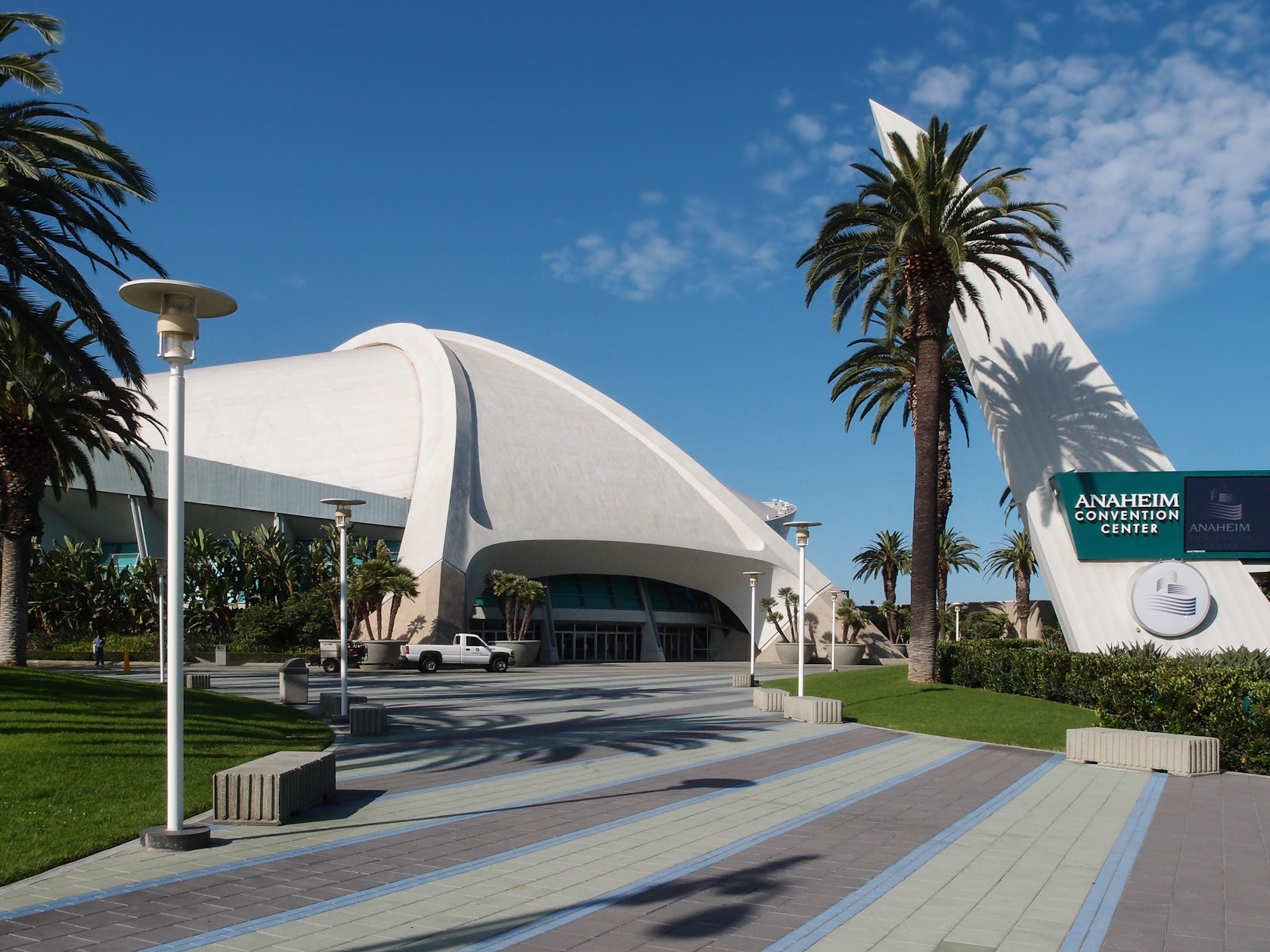
Anaheim Convention Center. Image via commons.wikimedia.org.
Large Domes — New progress in concrete construction brought the dome into the everyday architecture of Googie. The dome, often made of concrete, came from the space station and other sci-fi architecture. Some even resembled flying saucers.
Googie didn’t last forever, partly because America’s naïve view of a progressive future gradually faded in the 1960s, which saw the assassination of President Kennedy and the Vietnam War. However, the style is a great part of our history, and an example of architecture that was a part of pop culture. Here are some examples of Googie, so you can spot it next time you’re out on the road.
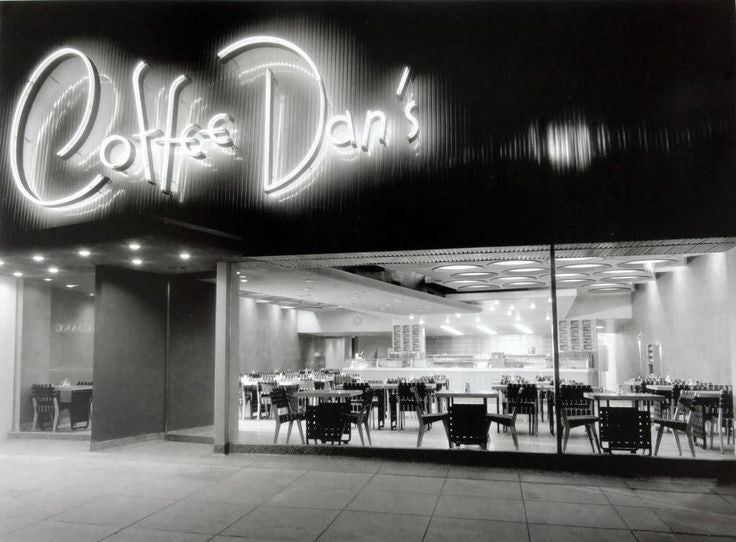
Early Googie at Coffee Dan’s Wilshire designed by Douglas Honnold and John Lautner in Los Angeles, 1948. Photo by Julius Shulman via pinterest.com
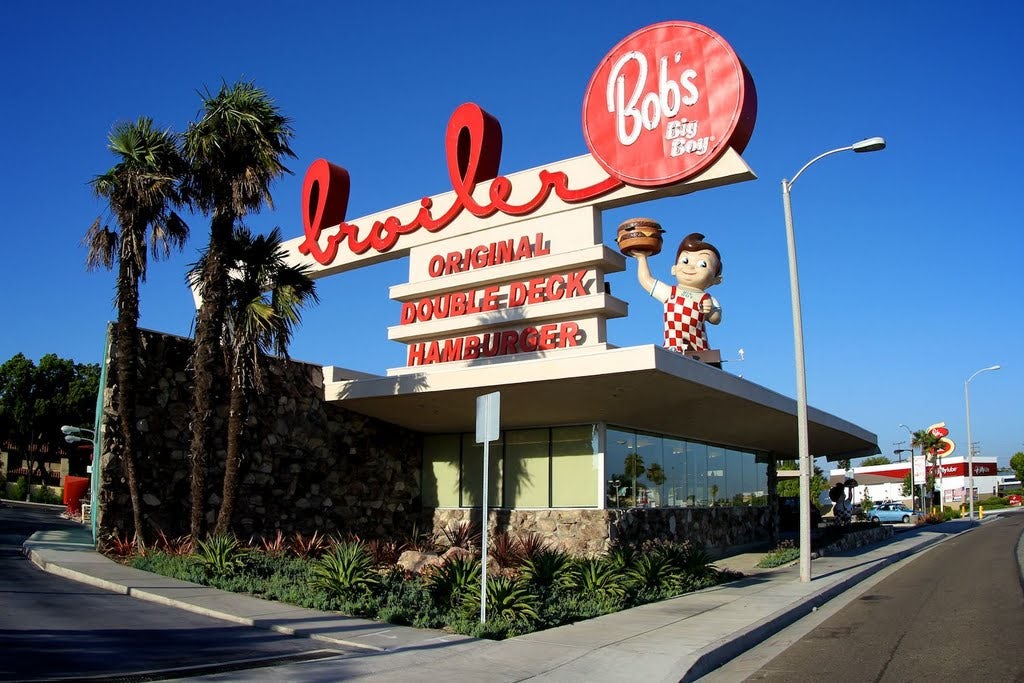
Bob’s Big Boy Broiler. Image via panoramio.com
Farmers Restaurant. Image via www.you-are-here.com
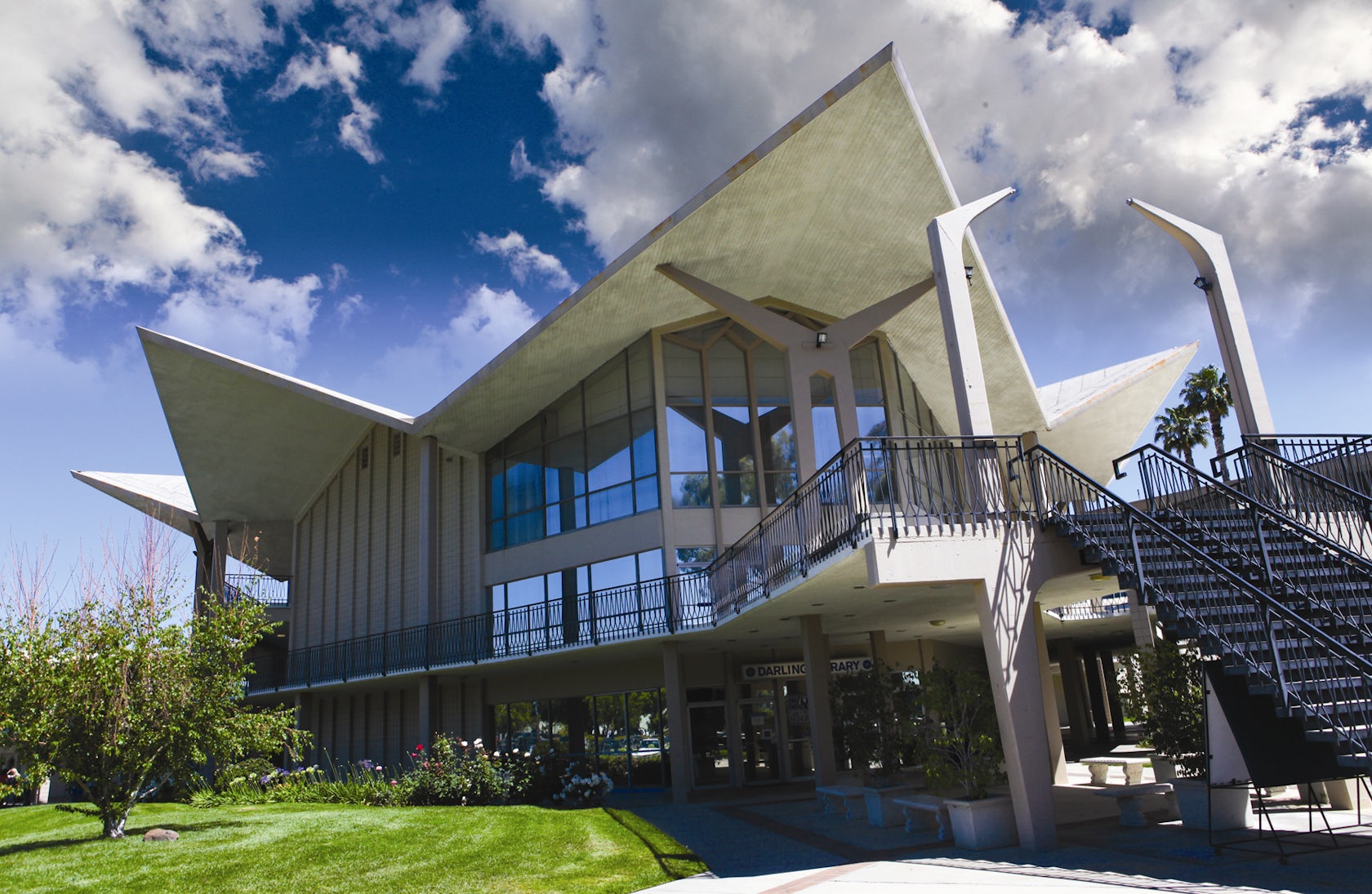
Hope International University in Fullerton, California. Image via en.wikipedia.org
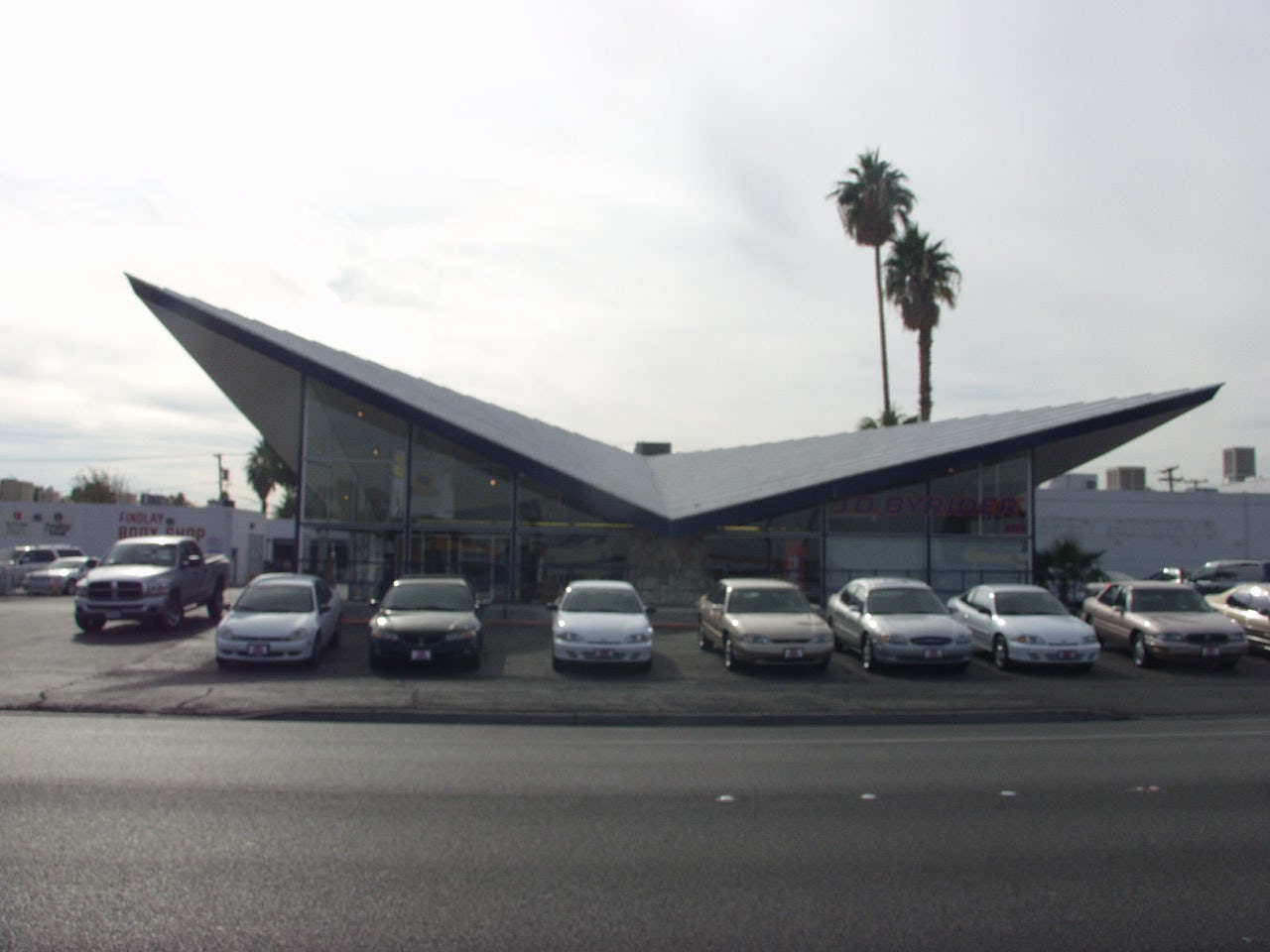
Findlay Auto Dealership, Las Vegas. Image via veryvintagevegas.com
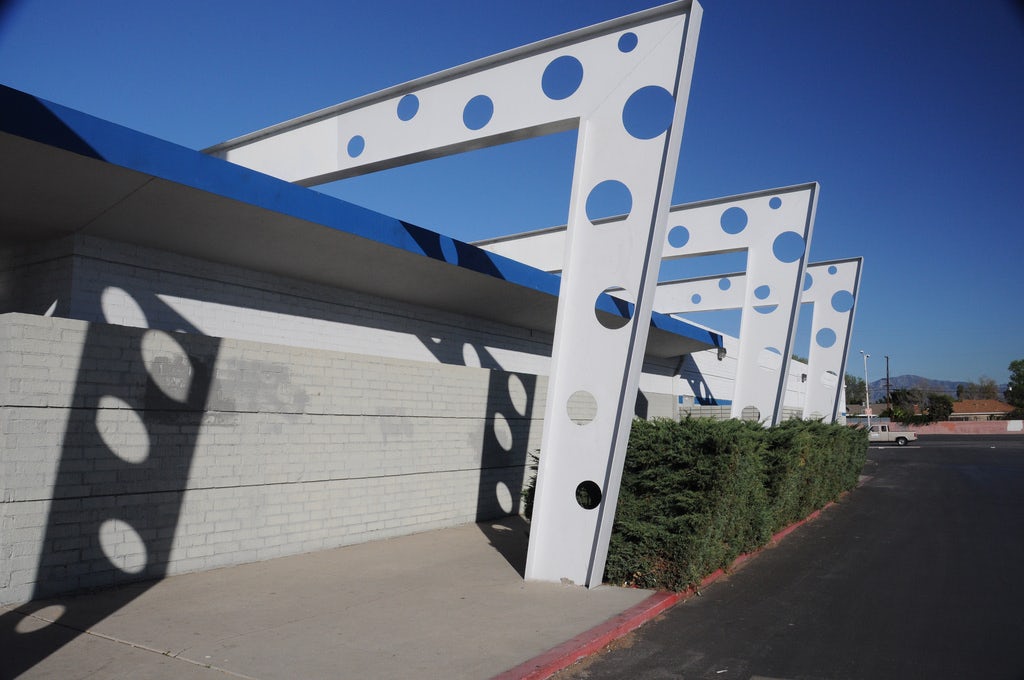
Mission Hills Bowl. Image via flickr.com









